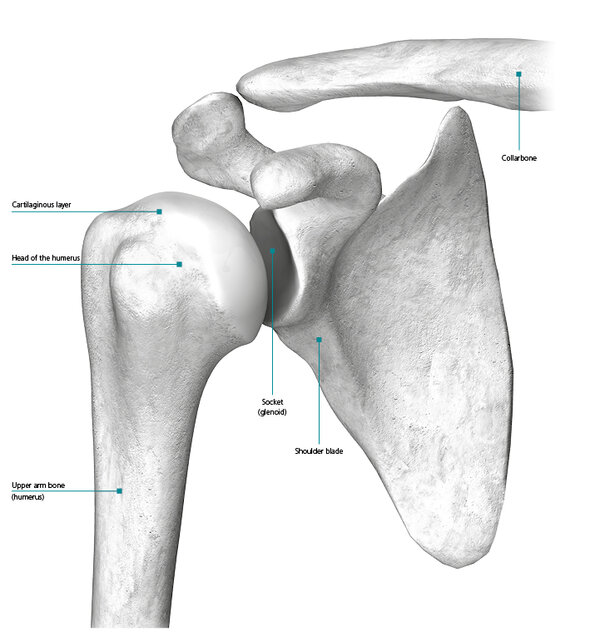The shoulder joint
The shoulder joint is the most mobile joint of the body but also highly susceptible to injuries. As a ball-and-socket joint, it allows movement in all directions and thus lets us use our arms and hands in many different ways.
The socket (also referred to as the glenoid) is part of the shoulder blade. Contrary to other ball-and-socket joints, it does not envelop the head completely. The glenoid and the round head of the upper arm bone, which is the ball that lies in the shoulder socket, are coated with a layer of cartilage. A viscous fluid, the so-called “synovial fluid”, is located between the two cartilage-covered joint surfaces. The joint cartilage is an elastic and water-containing tissue that ensures a smooth, nearly frictionless motion sequence.
Stability of the joint is ensured by ligaments, a joint capsule and especially the surrounding musculature. The so-called rotator cuff is formed by four muscles that enclose the joint like a cuff and thus centre the head of the upper arm bone in the socket. As a result, the rotator cuff contributes much more to the joint’s stability than the ligaments.
Tearing of one or several muscles or tendons of this structure is referred to as a rotator cuff rupture. This injury may be caused by an accident or by wear. Depending on the extent of the rupture, a more or less severe functional impairment or even a complete functional loss of the shoulder joint may occur.

